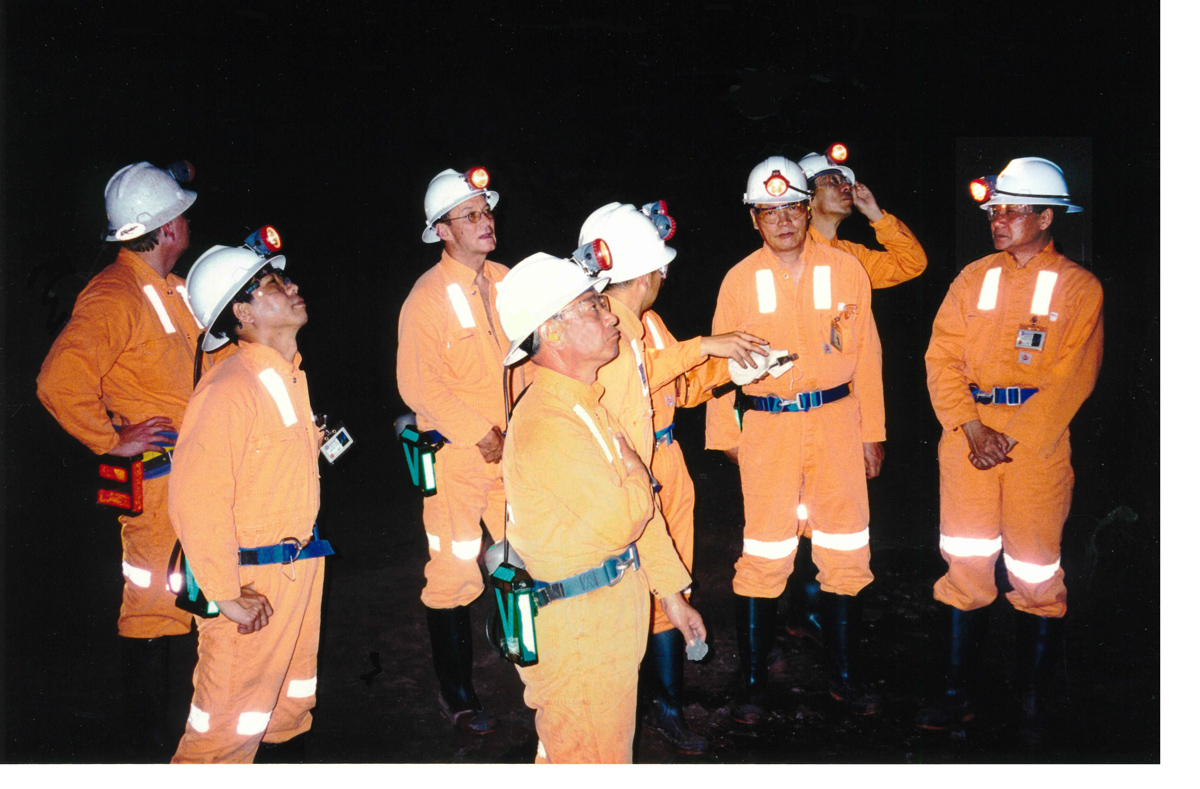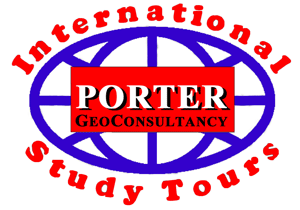| |||||||||||
| |||||||||||
| |||||||||||

From snow swept northern China, a group of eight geologists toured six sun-baked Australian mines on the custom-made Australian Mineral Foundation OzMines international study tour late last year. Mike Porter of Porter GeoConsultancy, who organised and managed the tour for the AMF, reports.
By Mike Porter When the group returned to the plane, it had been waiting in the sun all afternoon. It stood on a strip of tarmac in the open bush, surrounded by low eucalypts and scattered clumps of rank grass. The temperature outside was in the high thirties, and the heat in the cabin was oppressive. Overhead, tropical thunderheads gathered in the late afternoon, compounding the heat with humidity. The climate and terrain were a stark contrast for the eight geologists from northern China, where the cold winds of early winter now swept south out of Siberia, bringing a powdering of snow to the high grasslands. Despite these differences however, they had recognised many similarities with their homeland during the AMF OzMines 99 International Study Tour. Later, as the twin turbine Cessna Conquest climbed swiftly into the sky, the cabin cooled quickly. A brilliant ray of sunlight pierced the clouds and highlighted the Osborne open pit below, a splash of gold in the grey humidity haze. Osborne had been the last of an impressive list of six important Australian base metal deposits visited over the last five days. The others were Broken Hill, Olympic Dam, McArthur River, Mt Isa and Cannington, all hosted by Middle Proterozoic suites of rocks of between 1800 and 1400 Ma (million years) in age. Base Metals in Inner Mongolia The geologists on the AMF OzMines '99 International Study Tour included six senior officials from the Inner Mongolia Bureau of Geology & Mineral Resources. Inner Mongolia is a vast Province on the northern rim of China, extending over 2400 km from east to west, and covering an area of 1.28 million square kilometres. In common with Australia, Inner Mongolia embraces extensive blocks of 1800 to 1400 Ma old Middle Proterozoic rocks. Rocks of this age are relatively rare on a global scale, but where they do occur, they often host important clusters of major base metal deposits. In this respect Inner Mongolia is no different. It has the vast iron-oxide rare-earth Bayan Obo deposit, which has been compared to the iron-oxide copper-gold-rare earth deposits at Olympic Dam and Osborne. In addition however, it encompasses a cluster of l arge sediment hosted lead-zinc resources, with similarities to those at Mt Isa and McArthur River. All of these deposit are found on the northern margin of the North China Platform, overlying the older Sino-Korean Craton, just south of its boundary with the younger Junggar-Tienshan Fold Belt to the north. They occur within a block of Middle Proterozoic rocks that form two east-west trending domains which together cover an area of around 600x100 km. The northern of the two domains embraces the Bayan Obo string of orebodies, totalling over 600 million tonnes of magnetite ore exploited for iron and rare earth elements (REE), at grades of around 35% Fe and 5% REE. Bayan Obo is the worlds largest economic REE deposit. It is hosted by dolomite and is located close to the North Margin Deep Fault, a major crustal structure that defines the northern limit of the Platform, the Craton and the northern domain. This domain is characterised by a 7km thick, upward fining, sequence of sandstones, siltstones, shales and dolomites, cut by extensive Proterozoic to Phanerozoic granites. The southern domain is separated from the northern by another major east-west fault zone, and is defined by a thinner, 3 km thick equivalent, and very similar sedimentary succession, but with markedly lesser igneous rocks. The southern domain embraces a series of sediment hosted lead-zinc resources, some with associated copper and traces of gold. These are all found within black shales high in the sequence and are distributed over an 8km strike length. Together they contain more than 7.6 million tonnes of zinc in half a billion tonnes of sulphide mineralisation. The largest is Dongshengmiao with 147 Mt (million tonnes) @ 3.3% Zn, 1% Pb. Two other resources are Jiashengpan with 62 Mt @ 3.8% Zn, 1.3% Pb, 0.1g/tAu and Tanyaokou with 63 Mt @ 3.3% Zn, 0.2% Pb. 0.74% Cu, while Huogeqi has 96 Mt @ 1.1% Zn, 1.4% Pb, 1.1% Cu. Although these resources are low grade, they apparently embrace lesser tonnages of higher grade ore. These details were revealed by Mr Shao, the leader of the Inner Mongolian delegation, during a presentation to the Broken Hill branch of the Geological Society of Australia on the evening of Monday 6 December, at the end of the first full day of the tour. A Tour to Order The AMF was approached from China earlier in 1999 to design, organise and manage a tour to meet the requirements of this particular group of participants. The aim was to enhance their appreciation of the base metal deposits of Inner Mongolia through a comparison with analogues in Australia. This was achieved with the aid of the fast charter aircraft that hopped from mine to mine and allowed the 7000 km tour and seven mines to be comfortably covered in under 6 days. The AMF and the tour participants are indebted to the management, geologists and other technical staff of Pasminco Mining, WMC Resources, Mount Isa Mines, McArthur River Mines, BHP Minerals and Placer Dome for their cooperation, their time and for the benefit of their experience and knowledge. In addition, thanks are also due to Barney Stevens of the NSW Department of Mineral Resources for a very professional field workshop on the Curnamona Craton and Willyama Block. The Series Continues This was another in the continuing series of International Study Tours conducted by the AMF. Three future tours are currently in various stages of development and will be available to all applicants. These are:
Return to TOP
PorterGeo Home
| More on This Tour
| Other Tours
| About AMF
T M (Mike) Porter of Porter GeoConsultancy Pty Ltd on behalf, and to the specification, of the client. | |||||||||||











